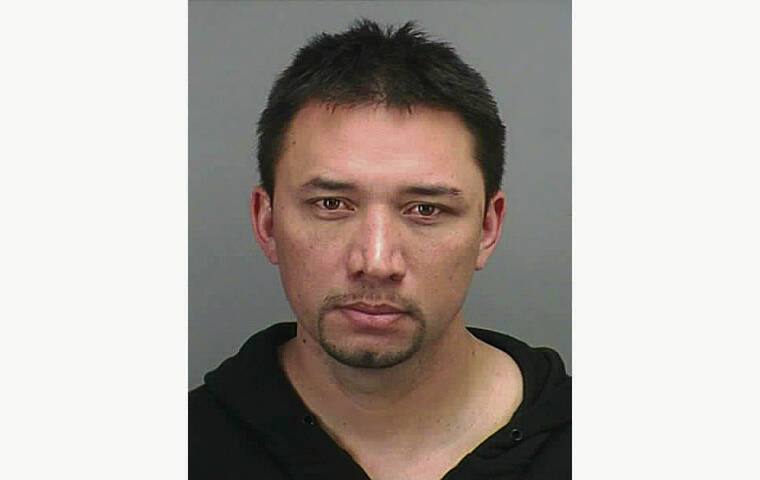A federal judge dismissed attempted murder and firearm charges against alleged organized crime leader Michael J. Miske Jr. related to a May 2017 attack at Kualoa Ranch, according to federal court records.
The charges of assault and attempted murder in aid of racketeering and carrying and using a firearm during and in relation to a crime of violence were dismissed. They were related to a May 23, 2017, incident where Miske associate Lindsey Kinney alleges he was attacked for declining to kill Johnathan Fraser, the 21-year-old who federal prosecutors allege Miske blames for the death of his son, Caleb.
Miske denied blaming Fraser or wanting him dead.
On June 4, after the U.S. Department of Justice rested its case 83 days into the trial, Miske’s attorneys moved for a judgment of acquittal, according to an order authored by Chief U.S. District Judge Derrick K. Watson that was filed Monday.
Watson granted some of Miske’s requests and denied others, leaving him facing 16 charges Opens in a new tab when his attorneys begin their defense today during the federal conspiracy and racketeering case.
The U.S. attorney’s office declined comment. Miske’s attorneys, Michael J. Kennedy and Lynn E. Panagakos, did not reply to Honolulu Star-Advertiser requests for comment.
Miske’s attorneys argued that there was “no evidence that he attempted to commit the murder of Kinney” or that he had an intent to kill Kinney, according to Watson.
“In response, the government argued that, when viewed in the light most favorable to it, the evidence shows that Miske received a ‘green light’ from Norman Akau, Akau ‘took away’ Kinney’s gun before Miske’s arrival, Miske directed Jake Smith and John Stancil to accompany him to Kualoa Ranch (where the incident took place), Miske checked with both Smith and Stancil to ensure they were armed, and Smith and Stancil both shot at Kinney. The government argued that this evidence was sufficient for a rational trier to find the essential elements of Count eight,” wrote Watson. “The Court disagrees with the government. As the proposed jury instructions to which both parties have agreed reflect, Count 8 can be proven in one of two ways: either Miske himself attempted to commit the attempted murder of Kinney, or Miske aided and abetted someone else in committing that crime.”
Miske’s “intent cannot be gleaned” from any of the evidence presented by federal prosecutors.
The only evidence that indicates “intentional conduct that is practically certain to cause the death of Kinney” is the testimony of Frederick Kaluna that Smith and Stancil both shot twice at Kinney with their “arms parallel to the ground.”
“That alone, however liberally viewed in the government’s favor, does not establish Miske’s intent. The government, therefore, relies on additional evidence. None of it helps. First, there is no evidence that Akau gave Miske a ‘green light’ or that Akau took Kinney’s gun as part of a plan to murder Kinney, as government counsel contended. Instead, Akau testified that, after Miske told Akau that he wanted to ‘fight’ Kinney, Akau approached Kinney, told him (after confirming that Kinney had continued texting Miske) that he was going to ‘fight’ Miske, and then told Kinney to give Akau his chain and gun, which Kinney did,” wrote Watson.
Federal prosecutors ignored testimony that showed Miske wanted to fight Kinney, and asked Smith to keep Kinney away from Miske. A “crime of violence is required for a conviction,” meaning the attempted murder and firearm charges were dismissed.
Among the charges upheld by Watson was that there was sufficient evidence to proceed with charges alleging the use of chloropicrin in a spate of March 2017 nightclub attacks, allegedly ordered by Miske.
Watson noted that police seized excess quantities of the chemical stored in a Jagermeister bottle during a traffic stop of Smith.

